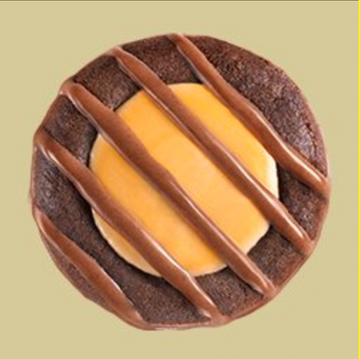One of the most anticipated March holidays is St. Patrick's Day. In the U.S., that means shamrocks strewn across faces, green beer, and Irish food. But guess what—some of your favorite Irish treats might not be all that Irish after all. Here's a history of a few of those iconic St. Paddy's Day dishes.
Corned Beef and Cabbage
Corned beef and cabbage isn't actually the national dish of Ireland. You wouldn't eat it on St. Patrick's Day in Dublin, nor would you be likely to find it in Cork. It's typically only eaten around the holiday here in the U.S. So how did corned beef and cabbage become synonymous with the Irish?
During the time of the Irish immigration to the U.S., the first generation of Irish Americans were in search of the comforting tastes of their homeland. On St. Paddy's Day, that meant boiled bacon. But the immigrants were too poor to afford the high price of pork and bacon products. Instead, they turned to the cheapest cut of meat available: beef brisket.
More From Delish

Given that New York City was a melting pot for immigrants from around the world, rather than boil the beef, the Irish adopted cooking methods from other cultures. Brining was a technique of the Eastern Europeans, which is a way of salt-curing meat. And the corn? Well, the word "corned" has nothing to do with corn. It actually refers to the corn-sized salt crystals used during the brining process. In fact, corned beef is sometimes referred to as "pickled beef," as you are quite literally pickling brisket with this particular brining process. The corned beef was paired with cabbage, as it was one of the cheapest vegetables available to Irish immigrants.
Irish Soda Bread
There is no Coke or Pepsi in Irish Soda Bread. The term "soda" comes from bicarbonate of soda—more commonly known as baking soda—which is a leavening agent and one of the main ingredients that gives the bread its distinct flavor. Before ovens were in every kitchen, the bread was baked over an open fire in a round pot or casserole or baked on an iron plate over remaining embers. Thus, the reason why the bread is round and cut into pie pieces.
In the U.S., we often find Irish Soda Bread flecked with currants (like scones), while in Ireland that is not the traditional recipe. Fruits are only added for special occasions, in which case the bread goes by a different name, like tea bread, as it would accompany your afternoon tea.
Guinness
While this stout beer was first produced in Ireland, its inspiration came from Great Britain. The tangy, creamy, dark-as-night beer was done in the style of an English porter brew from the late 18th century. Arthur Guinness began making his beer at St. James's Gate in Dublin in 1759, but it wasn't until 1769 that his ales made their way to the public. And when they made their debut, those six and a half barrels were headed for England. It would take 71 more years for the ales to make their way to New York.
Colcannon
Colcannon—boiled potatoes mashed up with cabbage or kale and then mixed with onions and butter (or cream)—can most certainly be traced back to Ireland. According to The Oxford Companion to Food, the word "colcannon" comes from the Gaelic "cal ceannann," meaning white-headed cabbage.
"The 'cannon' part of the name might be a derivative of the old Irish 'cainnenn,' translated variously as garlic, onion, or leek," states the publication. The recipe first appeared in print in 1775 in the diary of William Bulkely, and in the U.S., a recipe entitled "Cabbage and Potatoes" appeared in the 1847 publication of Mrs. Crowen's American Lady's Cookery Book.
What will you be cooking this St. Patrick's Day?












